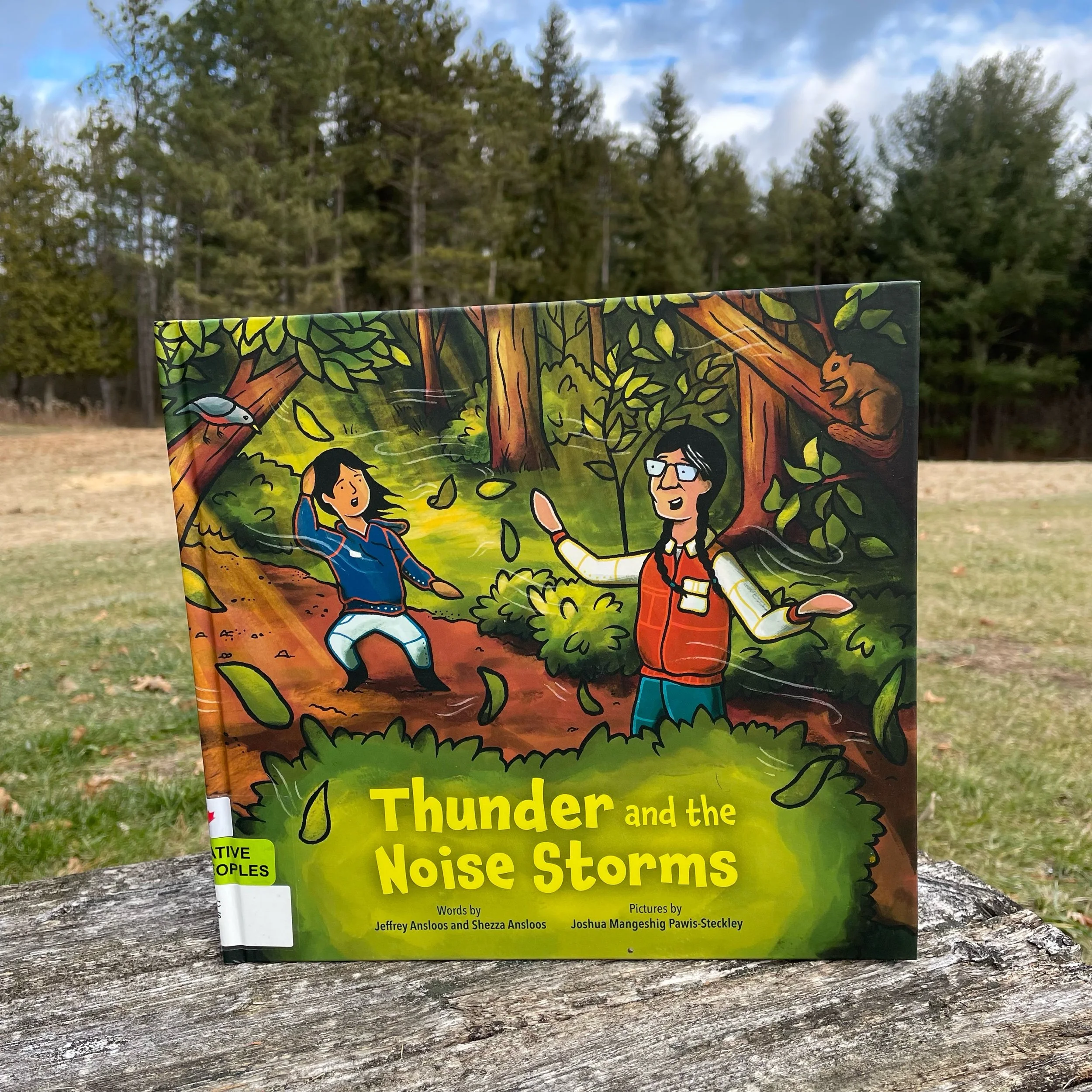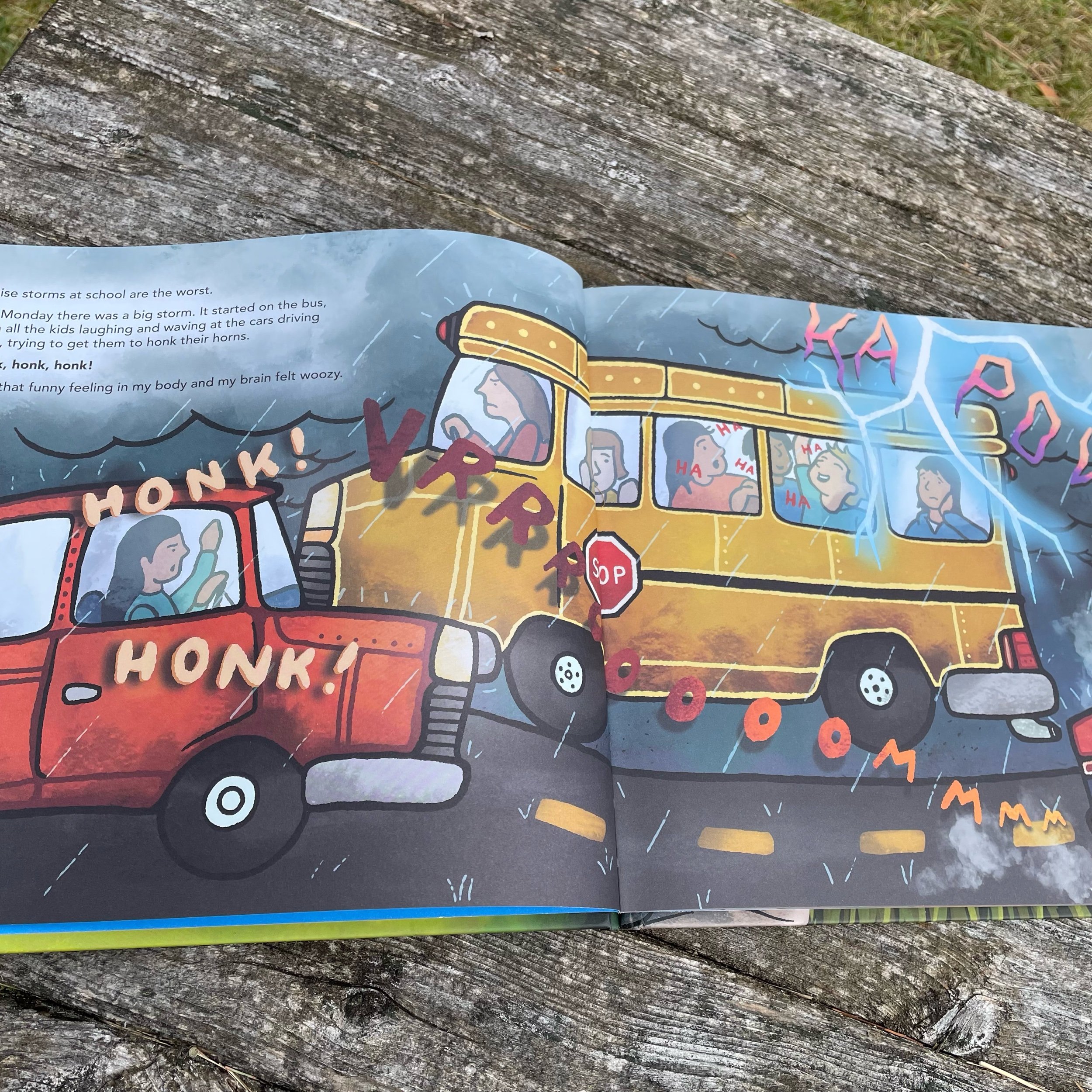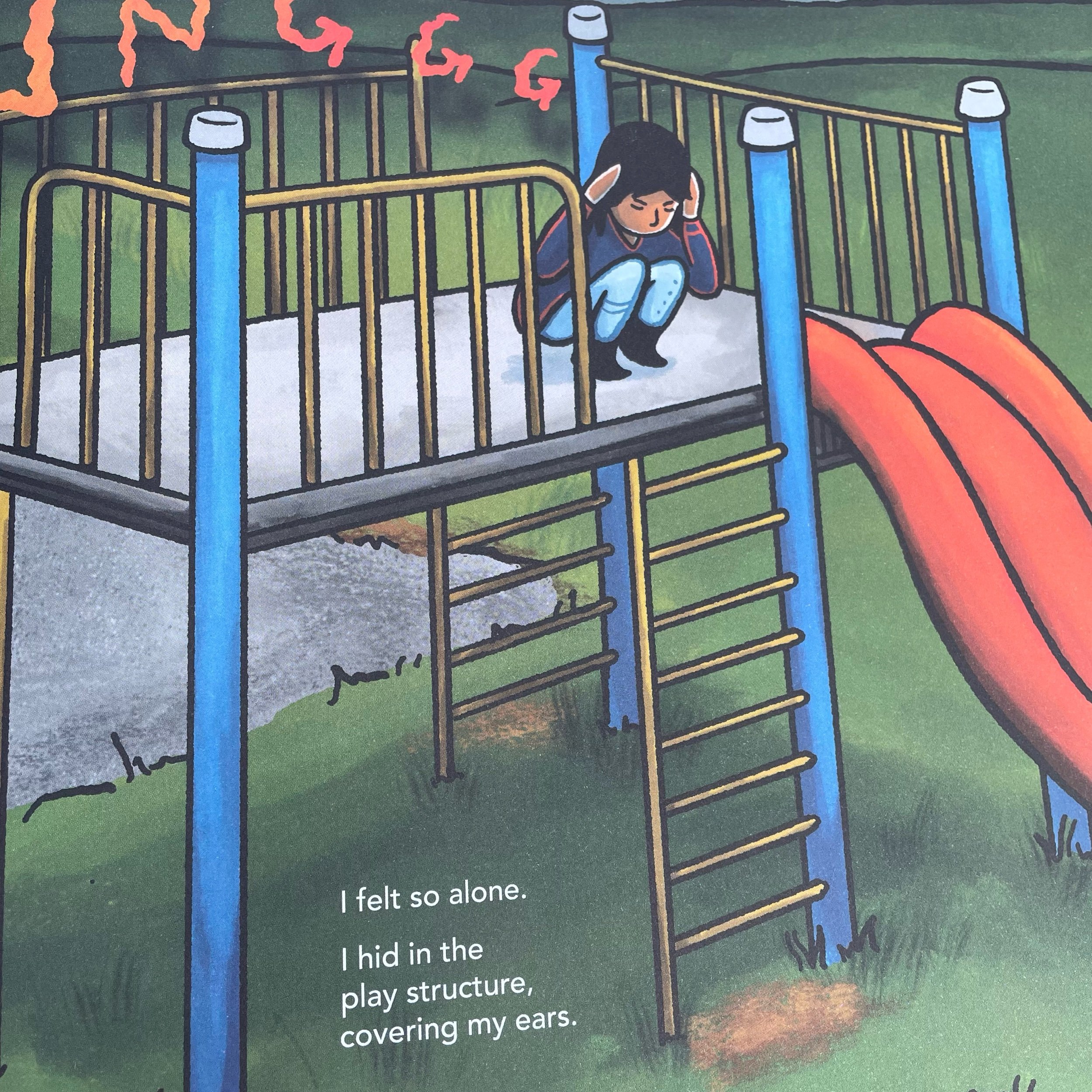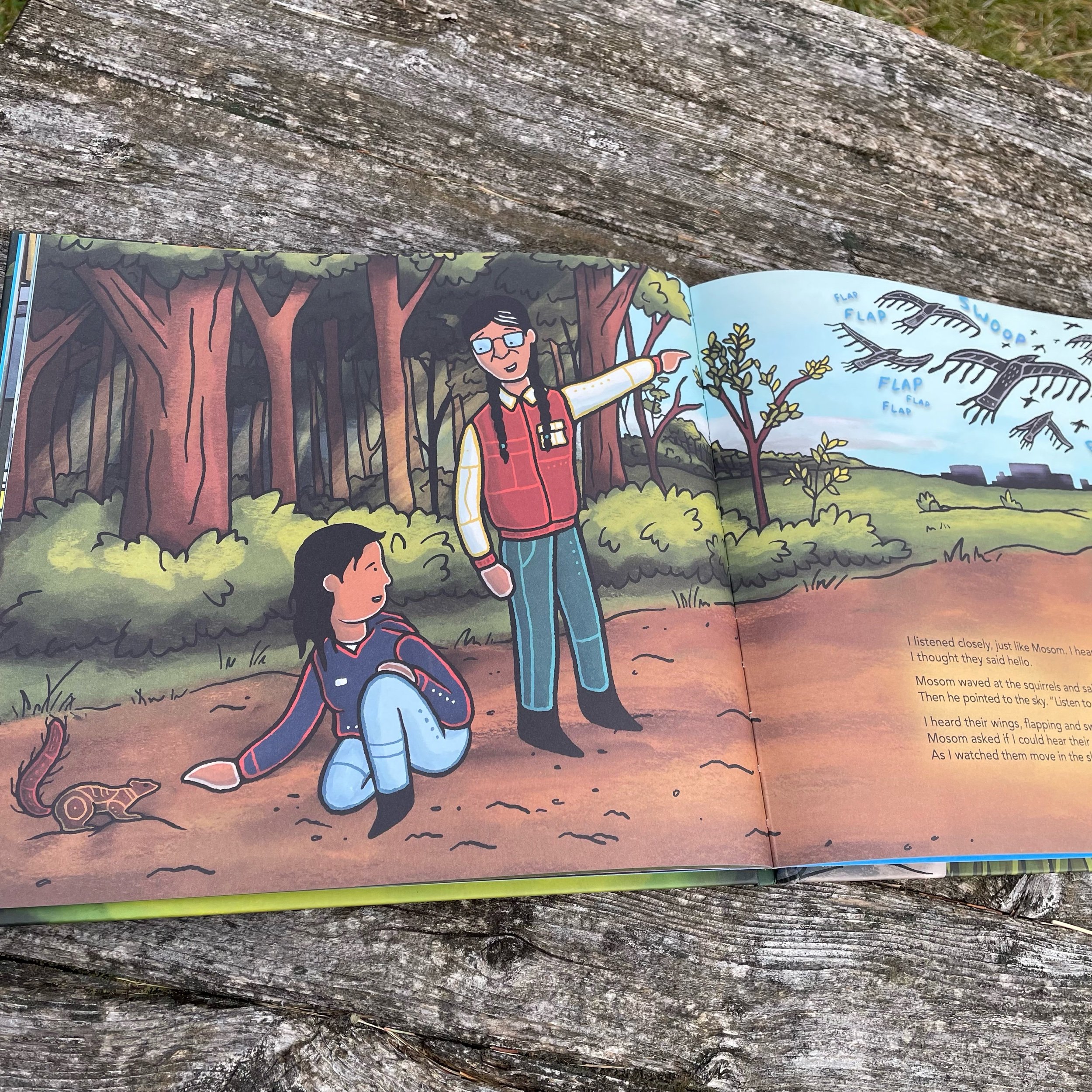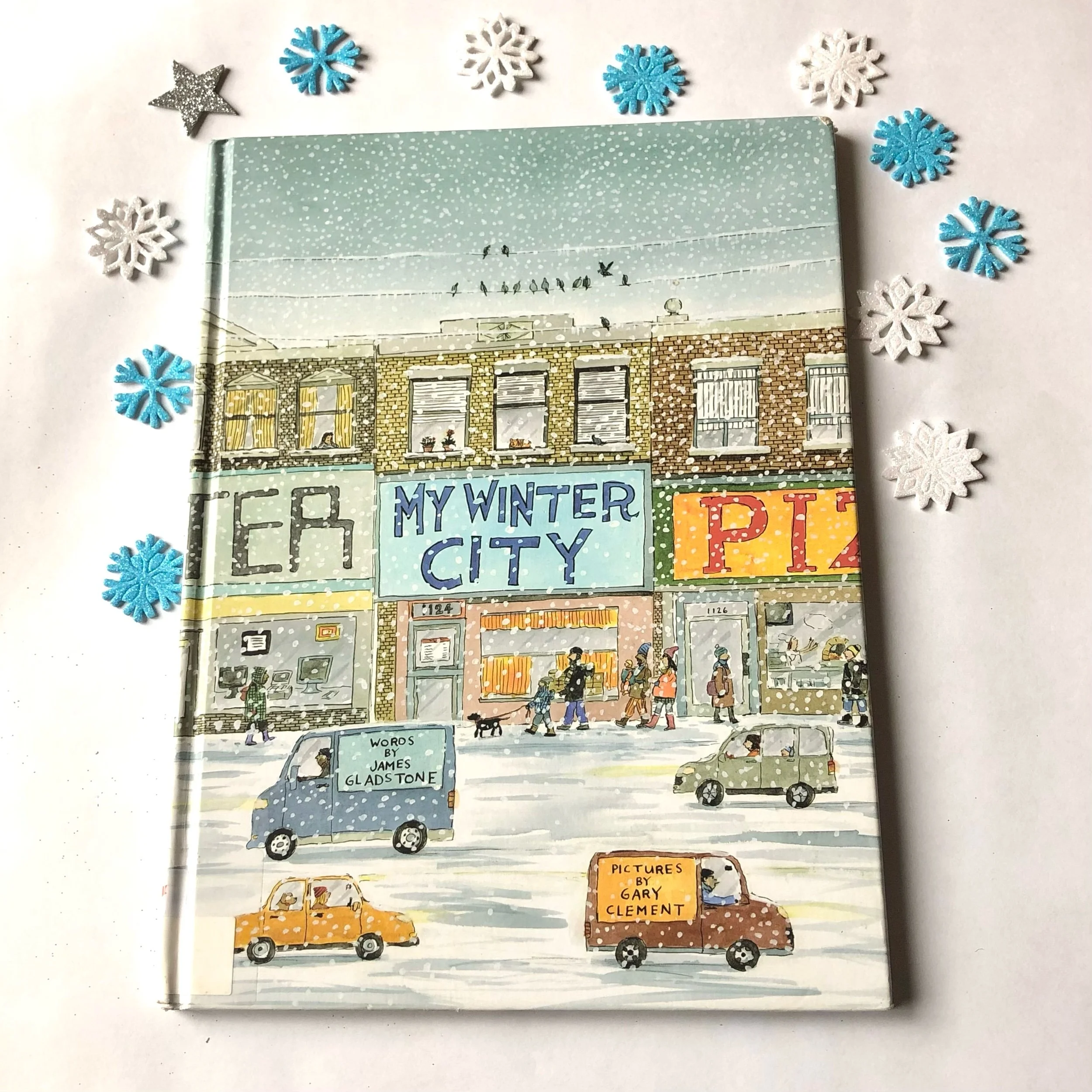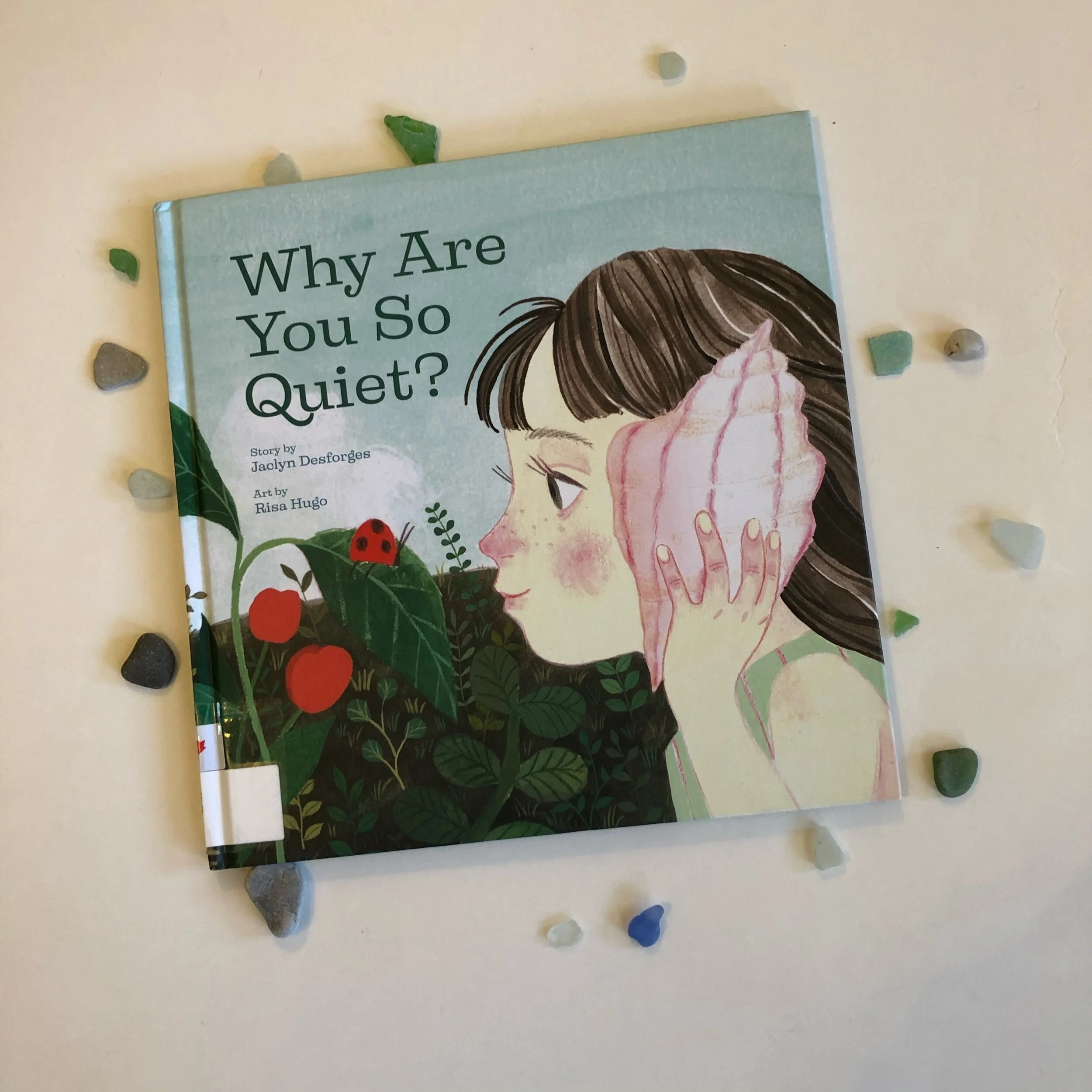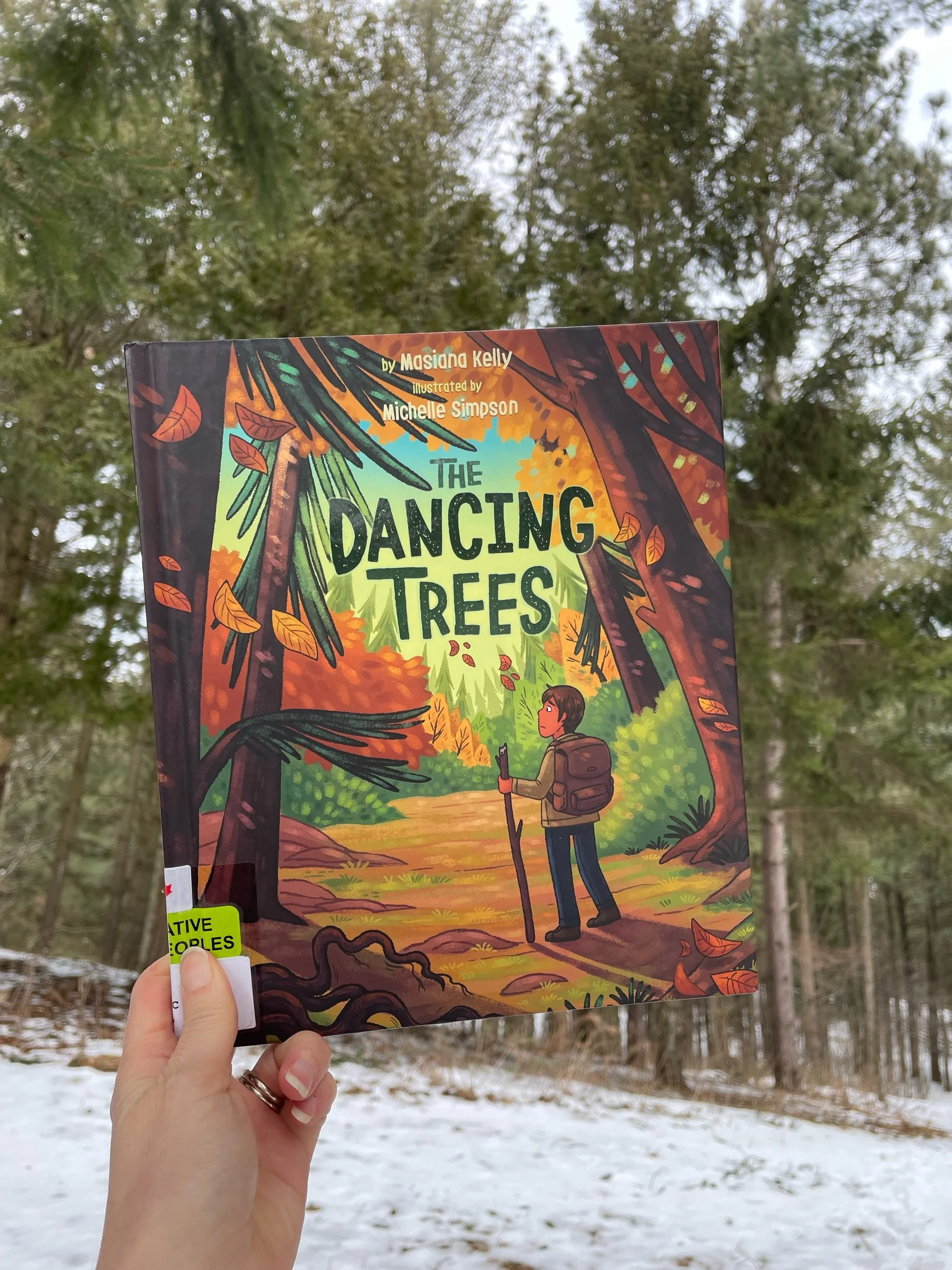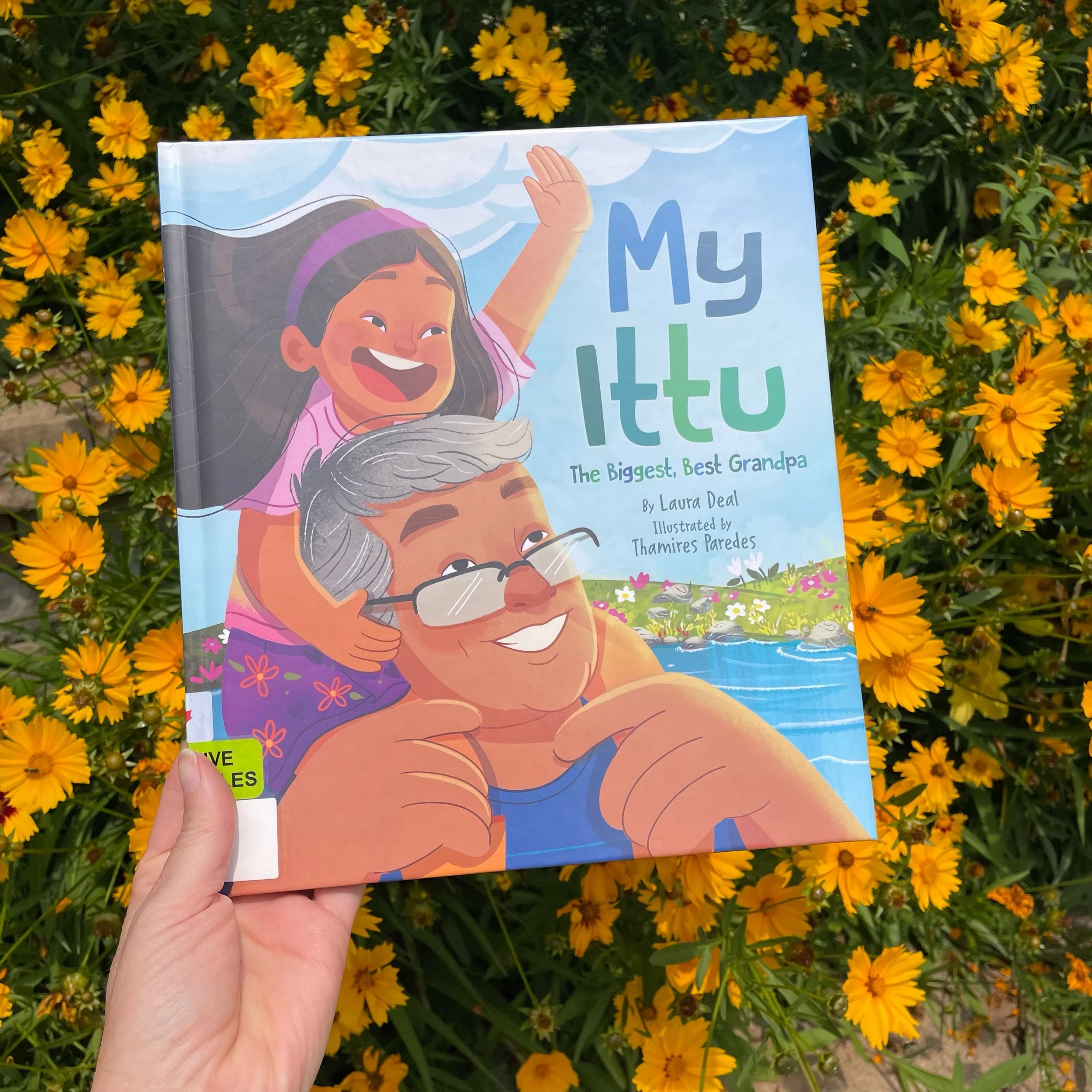Listen for the Quiet
For some, too much noise can cause anxiety and frustration. Thunder and the Noise Storms by Jeffrey Ansloos and Shezza Ansloos with illustrations by Joshua Mangeshig Pawis-Steckley takes readers through a beautiful meditation about how to quiet the noise all around.
Thunder has a hard time at school. There is so much noise, too many noise storms. He can’t concentrate, feels anxious and angry, even acting out at times. When the noise becomes so overwhelming that he hides after recess, the principal calls Mosom to come and help out. With gentle kindness, Mosom reframes the sounds for Thunder, teaches him to quiet his mind and listen for the quiet sounds like the wind and the water.
Jeffrey Ansloos and Shezza Ansloos’ story reminds readers to take a break from the noise. For all of us there are noises that are pleasant to our ears and other noises that are not. Many readers will identify with Thunder and his anger over all of the loud noises he is bombarded with day after day. Through Mosom, readers can learn coping mechanisms. Mosom reminds Thunder to listen for the quiet noises, to hear what they are telling you. He also encourages Thunder to take deep breaths when he feels the noises making his body feel rigid and angry. Last, he reminds Thunder to listen to his heart. Many stories by Indigenous authors contain an Elder/child relationship, reminding readers of the importance of Elders in all communities. They help us to be strong and give pretty good advice!
Readers can have a lot of fun with this story talking about sounds they like and sounds they don’t like. They can also create a word bank of sound words, pleasant ones and not so pleasant ones. Finally, they can go on a sound walk just like Thunder and Mosom and identify the loud sounds and the quiet ones.
The art in this story by Joshua Mangeshig Pawis-Steckley is beautiful. The whole book contains colour brimming, two page spreads full of sound words and beauty. The book is large so the illustrations pop out at readers making it perfect for sharing with a group. Joshua's illustrations are reflective of the Woodland art style of the Anishinaabe and you can see that influence in the people and creatures throughout the story.


